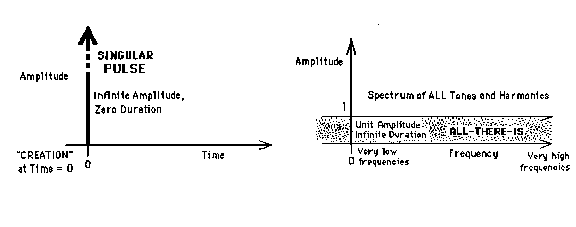Abraham is at home. He is reflecting on the many idols of metal and stone and wood that his father makes and sells. He has a realization that these idols are dead and inert and he "discovers" the One-God. This is a paraphrase of the traditional story. How are we to understand it? If we, as our scholars, assume that this story is to be taken literally, then Abraham realizes that the idols his father makes and sells are not alive, and thus not able to have any effect in the world no matter what or how they are prayed to and no matter what sacrifice is offered to them. We are assuming that a man whom we are told is educated and sophisticated would make and sell inert effigies as deities. If we met an educated and sophisticated person today we would not find it plausible that they would be in the business of selling idols. Why should we make that presumption about Terach?
Consider instead the following scenario. Terach, as an educated and worldly man, would know and appreciate the arts, sciences and spiritual beliefs of as many different peoples and cultures as were known in his world. We assume this of educated persons today. If this is so, then the "idols of metal and stone and wood" referred to in the traditional story are really the particular cultural embodiments of the arts, the sciences, and the sacred as they are known in various different cultures.
The "idols" of a sophisticated person are not, literally, stone effigies and statuettes. These "idols" are the cultural, political, social, and scientific paradigms comprising the world-views of the societies in which they (and we) live.
topWhen we examine the spiritual beliefs and cosmologies of many ancient and modern cultures we find that they all include excellent models of certain essential qualities of life - albeit each in its own cultural context with its own particular perspective, emphasis and physical analogs.
- The ancient Chinese developed a cosmology and an original ideographic alphabet based on the 28-mansions of the lunar zodiac.
- The Greeks and the Persians modeled the cyclicity of life by a pantheon of gods, goddesses and their familial relationships based on the 12-houses of the solar zodiac.2
- The Druids of northern Europe modeled the self-propagation of life on the life cycles of trees and other growing things.
Each and every culture has made accurate and effective models of the cyclic, self-propagating and self-referential nature of all life in terms appropriate to its needs and experience. These different cultural embodiments of the same universal principles underlying all life are referred to as "idols of metal and stone and wood." These "godlet" cultural paradigms are honored (and, literally, stone statues of these "idols" are worshipped) by the society that makes use of them.
- All cultures model the same processes of the same overall unity of the natural world and each uses a different physical example to do it.
Abraham, seeing through each example to a Singular archetype,
DEFINED the
One-God as the
Unity underlying all of them.Abraham, in this view, acts as a mathematician: he postulates a meaningful and functional
definition of Unity. The mathematician's model makes use of none of the "garments" of the many different cultural embodiments. Even though it is a mathematical model that must make use of geometry and form (or formalism) to be expressed, it (the model, not the sacred) MUST be understood as a complete abstraction without physical embodiment. A good mathematician tolerates no unneeded embellishments.
This perspective suggests why the Abrahamic faiths absolutely prohibit "graven images" of God. Any "graven image" would be a physical representation of only one culture's iconography during one historical period - it could never be a timeless model of a universal underlying Unity.
Once we understand this mathematician's idea of God as a DEFINITION necessary for universality we can, perhaps for the first time, see how and why it is possible that the Abrahamic faiths' insistence that God is the ONLY-GOD could be literally true, and not just the chauvinistic religious puffery of these faiths - and in a way that does not impugn the validity of other religions. The definition of Unity is in no way prejudicial to any other view.

